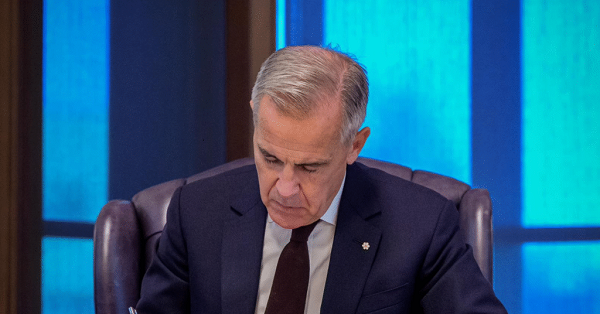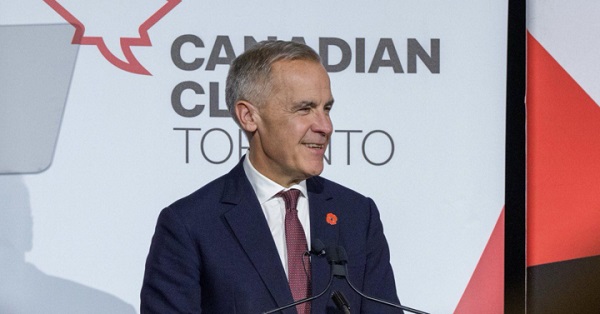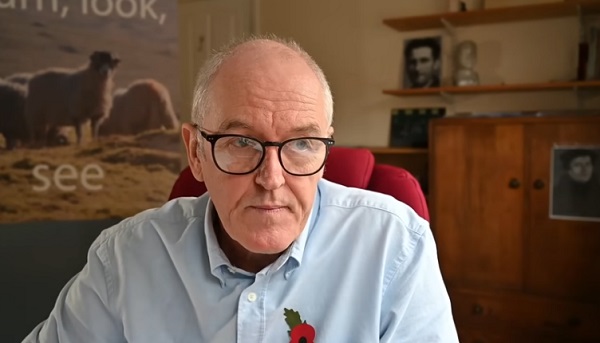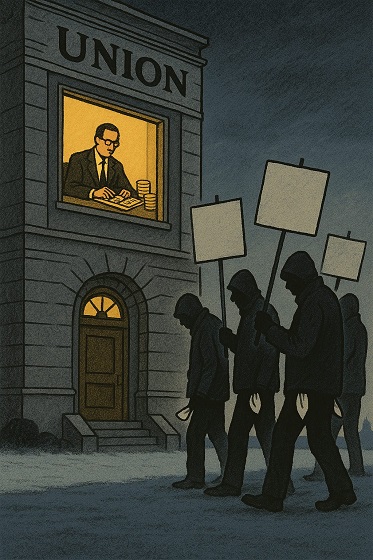Opinion
The 5 Stages to an Alberta Party Election Loss

The Alberta Party managed to attain 5x more votes than they did in 2015. Yet were the biggest losers of the 2019 election cycle. To be honest I believe we would have been well served to have the AB Party win a couple seats in the legislature. However, that is certainly not how things went down on April 16th. They gained 5x the votes and lost all three of their seats.
I have seen some curious behaviour from former Alberta Party candidates as of late and it got me to thinking: ‘What is the AB Party (both party and individual candidates) going through right now?’ Lets explore what I believe to be happening and where I think they need to go to turn (what is now a fringe party) into the opposition.
5 Stages of the Alberta Party Loss
Denial
As mentioned The AB Party went into the election holding 3 seats, hoping to build upon their party growth. What they attained was actually pretty incredible. They recieved over 5x the amount of votes they had in 2015. From 33,867 to 170,872. The response to attaining 0 seats was not surprising and was somewhat humble In my opinion. Mandel cited being proud of the AB Party brand and, frankly, they should be. However, he was wrong for blaming polarization as the reason for the loss. You cannot simultaneously gain 5x the votes and blame polarization. The one thing missing here is that there has been no recognition that their platform was extremely weak. They continue to be in denial that their ideas were not inspiring, their vision was lacking, and their boldness was not focussed on any areas of importance. The AB Party is currently in denial. I do, however, think they are moving past this. Slowly but surely.
Anger
Although we have not seen a direct example of anger from the Party we have started seeing some pretty broad examples of anger throughout the AB Party team/former candidates. I have seen individual candidates who have generally touted themselves as the calm and collected type start to lash out. I have seen insults directed towards conservatives and towards anyone who disagrees with them in general. It is clear that after a couple weeks individuals are starting to feel angry. This is to be expected it is, after all, a human trait. It is now a month after the election. Candidates who worked so hard for so long are realizing what the election cost them both financially, and emotionally. They find it freeing not to be under the “do no harm” mantra of the party system anymore and are beginning to say how they really feel. This is where the rubber really hits the road. The AB party was supposed to be different, made up of candidates who respond with thoughtfulness and consideration. The blinders are being pulled off and we are finding out that the AB party is just another party. They are no different than anyone else. They have their spin, they have their ideology, and ultimately they were fooling themselves into thinking they were different. Perhaps this is an opportunity for their candidates to prove me wrong and pull back on some of the over the top anger and remember that anger is in general, just not worth it.
Bargaining
We have seen a very very clear example of bargaining this week. The AB Party refuses to accept the fact that they are no longer in the Legislature. They have asked for money from they LAO with the intent of being a quasi opposition without a seat in the legislature. They want the funding to do the research while they no longer represent anyone. This is just part of the steps of grief that the AB Party is facing. They are trying to hold on to what once was but no longer is.
Depression
I don’t think the AB party is here yet. Depression in the party sense is devastating. We are going to see growing disinterest from individuals who gave so much before the election. We are going to see folks question ‘What is the point?’. They are going to question the AB party principles, they are going to ask themselves if they should just try to change the NDP or UCP from within. There will be some individuals who pull back and you won’t hear from them again. This is the stage that the Party’s head brass need to address head on. They need to quickly work on inspiring individuals and they need to come up with a plan to allow individuals the time to “shut-off” after a tough election while ensuring they don’t lose touch. If the depression symptom spirals out of control their party will die. On an individual sense, and with sincerity, I do ask anyone who finds themselves getting into this stage to take the time to reflect on the greater good in life. Please seek help if you need to. Depression is nothing to joke about and, yes, an election loss is a legitimate reason for someone to become depressed.
Acceptance.
I do hope the AB party is able to move to acceptance quickly. Let’s look at a few things that the AB party needs to accept.
1. They ran a terrible platform – Yes, there were things in their platform that were amenable. However, it was choppy there was no consistency. It focussed on things that Albertans didn’t care enough about. They were bold in all the wrong areas.
2. The AB party made a mistake kicking out Greg Clarke as leader – There was no opposition MLA that I liked more than Greg. Make no mistake, (while Greg may not admit it himself) Greg’s demotion was a result of a coup from old PC members who didn’t like Jason Kenney. They were quick to join the AB party and place their own person in the position of leadership. Stephen Mandel may have carried the party to 5x more votes but there is no doubt it was on the kindness and likability of former MLA Greg Clarke.
3. They cannot blame polarization for their loss – If they knew that the election was going to be a polarizing one they were perfectly positioned to create themselves as the opposing pole. Instead they positioned themselves as an outlier. The election was polarizing, yes. However, as I already said, they cannot simultaneously blame polarization while championing 5x more votes.
4. They are not different than other parties. – Trying to run a party as though Ideology doesn’t exist is a fools errand. The thought that they are going to do politics differently and its all going to turn out does not come from humility but rather just a vain attempt to pull the wool over the eyes of the public. Trudeau is a perfect example of the AB party narrative. He was going to do politics differently too. The AB party just isn’t different from other parties and the idea that they think they are is actually quite frightening.
5. They need to stop talking, and start working – The AB party is doing themselves no favours by silly maneuvers such as asking for money from the LAO. They need to stop this nonsense and come to grips with the fact that they are now no different than the FCP, the AAP, and the AIP. They should look at the votes they attained as an opportunity to fundraise, not as a passage to being taxpayer funded.
In Conclusion: There is a lot of room for the Alberta party to grow and become the official opposition in 2023. However, this will never happen if they get stuck where they are. They need to move beyond the Denial, Anger, Bargaining, and Depression stages and start to accept their failures so they can embrace the reasons for their incredible success at achieving 5x more votes than they did in 2015.
Business
Liberal’s green spending putting Canada on a road to ruin

Once upon a time, Canadians were known for our prudence and good sense to such an extent that even our Liberal Party wore the mantle of fiscal responsibility.
Whatever else you might want to say about the party in the era of Jean Chrétien and Paul Martin, it recognized the country’s dire financial situation — back when The Wall Street Journal was referring to Canada as “an honorary member of the Third World” — as a national crisis.
And we (remember, I proudly served as Member of Parliament in that party for 18 years) made many hard decisions with an eye towards cutting spending, paying down the debt, and getting the country back on its feet.
Thankfully we succeeded.
Unfortunately, since then the party has been hijacked by a group of reckless leftwing fanatics — Justin Trudeau and his lackeys — who have spent the past several years feeding what we built into the woodchipper.
Mark Carney’s finally released budget is the perfect illustration of that.
The budget is a 400 page monument to deficit delusion that raises spending to $644.4 billion over five years — including $141.4 billion in new spending — while revenues limp to $583.3 billion, yielding a record (non-pandemic) $78.3 billion shortfall, an increase of 116% from last year.
This isn’t policy; it’s plunder. Interest payments alone devour $55.6 billion this year, projected to hit $76.1 billion by 2029-30 — more than the entire defence budget and rising faster than healthcare transfers.
We can’t discount the possibility that this will lead to a downgrade of our credit rating, which will significantly increase the cost of borrowing and of doing business more generally.
Numbers this big start to feel very abstract. But think of it this way: that is your money they’re spending. Ottawa’s wealth is made up entirely of our tax dollars. We’ve entrusted that money to them with the understanding that they will use it responsibly. In the decade these Liberals have been in power, they have betrayed that trust.
They’ve pursued policies which have made life in Canada increasingly unaffordable. For example, at the time of writing it takes 141 Canadian pennies (up from 139 a few days ago) to buy one U.S. dollar, in which all of our commodities are priced. Well, that’s .25 cents per litre of gasoline. Imagine what that’s going to do to the price of heating, of groceries, of the various other commodities which we consume.
And this budget demonstrates that the Carney era will be more of the same.
Of course, the Elbows Up crowd are saying the opposite — that this shows how fiscally responsible Mark Carney is, unlike his predecessor. (Never mind that they also publicly supported everything that Trudeau did when he was in government.) They claim that Carney shows that he’s more open to oil and gas than Trudeau was.
Don’t believe it.
The oil and gas sector does get a half-hearted nod in the budget with, for instance, a conditional pathway to repeal the emissions cap. But those conditions are important. Repeal is tied to the effectiveness of Carney’s beloved industrial carbon tax. If that newly super-charged carbon tax, which continues to make our lives more expensive, leads to government-set emissions reductions benchmarks being met, then Ottawa might — might — scrap the emissions.
Meanwhile, the budget doubles down on the Trudeau government’s methane emissions regulations. It merely loosens the provisions of the outrageous Bill C-59, an act which should have been scrapped in its entirety. And it leaves in place the Trudeaupian “green” super structure, which has resource sector investment, and any business that can manage it, fleeing to the U.S.
In these perilous times, with Canada teetering on the brink of recession, a responsible government would be cutting spending and getting out of the way of our most productive sectors, especially oil and gas — the backbone of our economy.
It would be repealing the BC tanker ban and Bill C-69, the “no more pipelines act,” so that our natural resources could better generate revenue on the international market and bring down energy rates at home.
It would quit wasting millions on Electric Vehicle charging stations; mandating that all Canadians buy EVs, even with their elevated cost; and pressuring automakers to manufacture Electric Vehicles, regardless of demand, and even as they keep closing up shop and heading south.
But in this budget the Liberals are going the opposite direction. Spend more. Tax more. Leave the basic Net-Zero framework in place. Rearrange the deck chairs on the Titanic.
They’re gambling tomorrow’s prosperity on yesterday’s green dogma, And every grocery run, every gas fill-up, every mortgage payment will serve as a daily reminder that we are the ones footing the bill.
Once upon a time, the Liberals knew better. We made the hard decisions and got the country back on its feet. Nowadays, not so much.
Business
Carney doubles down on NET ZERO

If you only listened to the mainstream media, you would think Justin Trudeau’s carbon tax is long gone. But the Liberal government’s latest budget actually doubled down on the industrial carbon tax.
While the consumer carbon tax may be paused, the industrial carbon tax punishes industry for “emitting” pollution. It’s only a matter of time before companies either pass the cost of the carbon tax to consumers or move to a country without a carbon tax.
Dan McTeague explains how Prime Minister Carney is doubling down on net zero scams.
-

 Crime1 day ago
Crime1 day agoCBSA Bust Uncovers Mexican Cartel Network in Montreal High-Rise, Moving Hundreds Across Canada-U.S. Border
-

 Environment1 day ago
Environment1 day agoThe Myths We’re Told About Climate Change | Michael Shellenberger
-

 Energy2 days ago
Energy2 days agoIt should not take a crisis for Canada to develop the resources that make people and communities thrive.
-

 Dr John Campbell2 days ago
Dr John Campbell2 days agoCures for Cancer? A new study shows incredible results from cheap generic drug Fenbendazole
-

 Artificial Intelligence1 day ago
Artificial Intelligence1 day agoAI Faces Energy Problem With Only One Solution, Oil and Gas
-

 Health1 day ago
Health1 day agoLack of adequate health care pushing Canadians toward assisted suicide
-

 Alberta24 hours ago
Alberta24 hours agoATA Collect $72 Million in Dues But Couldn’t Pay Striking Teachers a Dime
-

 Media23 hours ago
Media23 hours agoBreaking News: the public actually expects journalists to determine the truth of statements they report









